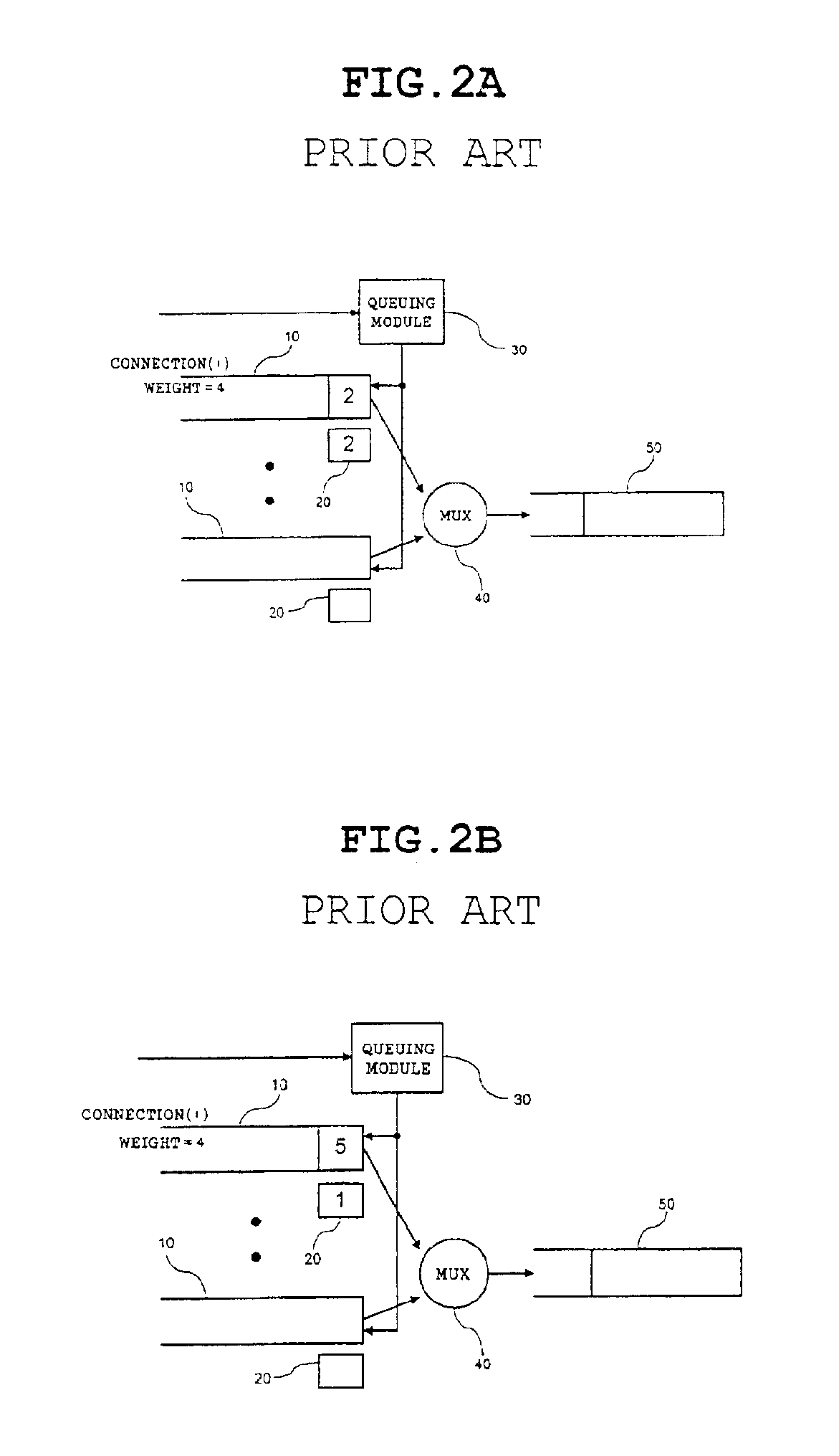Apparatus and method for delay bound weighted round robin cell scheduling in asynchronous transfer mode switch
- Summary
- Abstract
- Description
- Claims
- Application Information
AI Technical Summary
Benefits of technology
Problems solved by technology
Method used
Image
Examples
Embodiment Construction
[0032]With reference to FIG. 3, there is shown in block form the construction of an apparatus for DBWRR cell scheduling in an ATM switch in accordance with a preferred embodiment of the present invention. As shown in this drawing, the DBWRR cell scheduling apparatus comprises a plurality of input buffers 100, a queuing module 200, a plurality of ATM cell scheduling tables 300, an ATM processor 400, a Mux 500 and an output buffer 600.
[0033]The input buffers 100 are memories for storing high-speed ATM cell groups written by the queuing module 200 in order.
[0034]The queuing module 200 acts to receive high-speed ATM cells from a block just upstream of the system (for example, a switch or router), group the received ATM cells according to scheduling cycles on a link basis and store the resulting ATM cell groups in the input buffers 100. In the present embodiment, if time from one service reception to the next service reception in a connection i is defined as RPi (Round Robin Period), cel...
PUM
 Login to View More
Login to View More Abstract
Description
Claims
Application Information
 Login to View More
Login to View More - R&D
- Intellectual Property
- Life Sciences
- Materials
- Tech Scout
- Unparalleled Data Quality
- Higher Quality Content
- 60% Fewer Hallucinations
Browse by: Latest US Patents, China's latest patents, Technical Efficacy Thesaurus, Application Domain, Technology Topic, Popular Technical Reports.
© 2025 PatSnap. All rights reserved.Legal|Privacy policy|Modern Slavery Act Transparency Statement|Sitemap|About US| Contact US: help@patsnap.com



